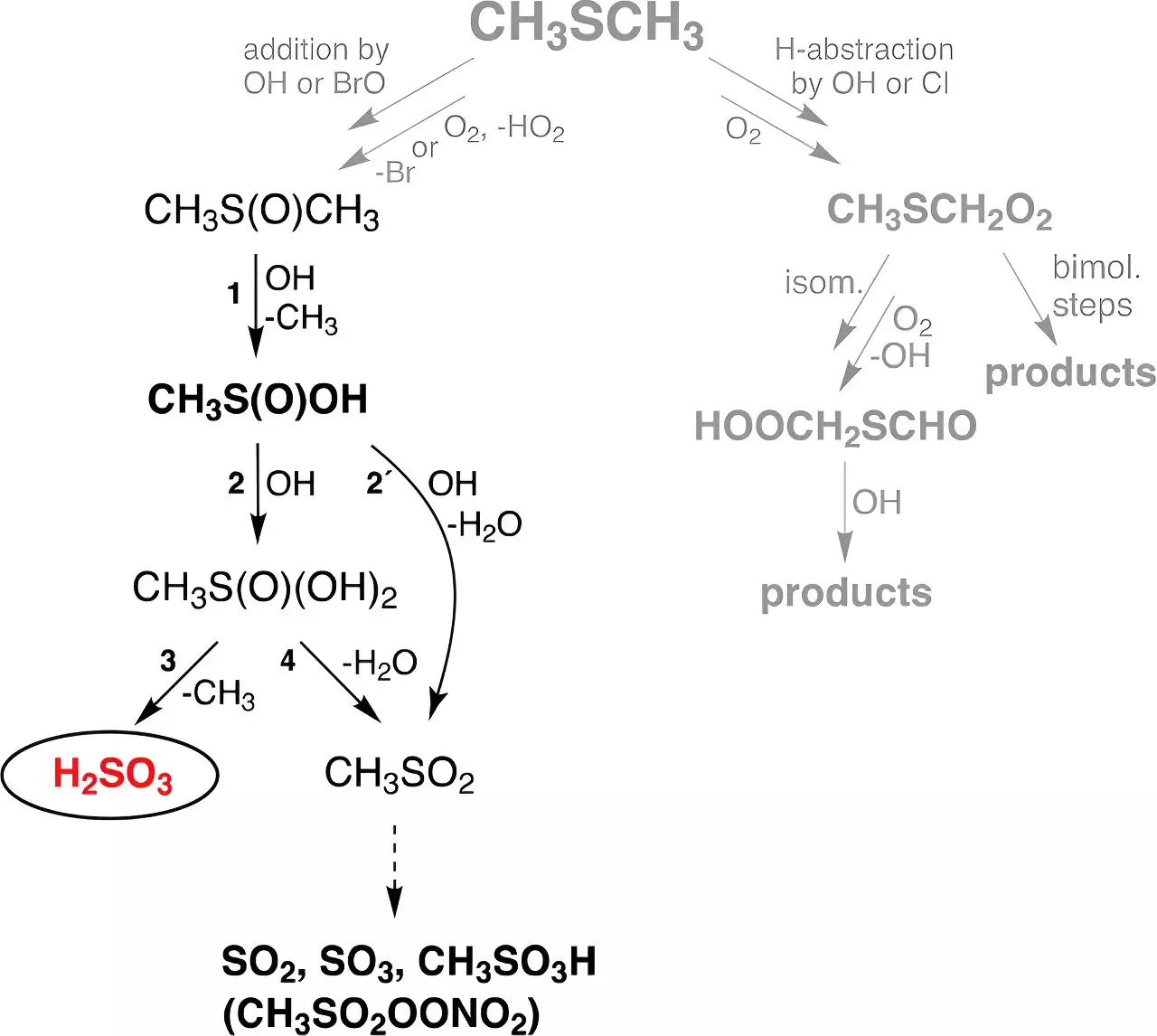The atmosphere is a complex mixture of gases that undergoes various chemical transformations, contributing to environmental dynamics and climate change. A recent groundbreaking study from the Leibniz Institute for Tropospheric Research (TROPOS) in Leipzig has led to a remarkable revelation: the detection of sulfurous acid (H2SO3) in the gas phase under atmospheric conditions. Traditionally shrouded in mystery, H2SO3 has long been deemed elusive, with scientists questioning its existence outside of aqueous solutions. This discovery, published in the prestigious journal Angewandte Chemie, has opened new avenues of inquiry into atmospheric chemistry, presenting a clearer picture of sulfur compounds and their roles in environmental processes.
Sulfurous acid has historically been difficult to isolate and study, primarily because its existence has been largely confined to theoretical discussions or indirect evidence. Textbooks typically point out the potential formation of H2SO3 in solutions of sulfur dioxide (SO2), yet its isolation as a discrete entity was considered nearly impossible until now. Existing literature over the years has failed to identify H2SO3 in controlled aqueous environments, with only its associated constituents—bisulfite (HSO3−) and sulfite (SO3²−)—being detected reliably.
In the quest for concrete evidence of H2SO3, researchers from TROPOS employed an innovative approach utilizing advanced spectroscopic methods within specially designed flow reactors simulating atmospheric conditions. Their observations yielded significant results: for the first time, sulfurous acid was successfully detected in gas-phase experiments, demonstrating stability for an impressive duration of up to 30 seconds irrespective of humidity levels. This persistence challenges previous assumptions regarding the compound’s fleeting nature and suggests intriguing implications for its behavior in the atmosphere.
Dr. Torsten Berndt, one of the lead researchers, expressed excitement over witnessing clear signals for H2SO3 in their spectrometer, particularly considering the skepticism surrounding the compound’s existence. This achievement emphasizes not only the significance of their findings but also the remarkable technological advancements that make such delicate measurements possible. The research highlights how novel experimental designs paired with sensitive detection equipment can unveil long-hypothesized compounds and reaction pathways.
The implications of this discovery extend far beyond mere laboratory findings. The evidence presented suggests that H2SO3 is a far more common product of atmospheric reactions than previously understood. By employing global chemistry-climate modeling, the research team estimated that approximately 8 million tons of H2SO3 are generated worldwide each year. This estimate underscores the role of dimethyl sulfide (DMS)—a biogenic compound predominantly released from marine sources—as a significant contributor to sulfur pollution through its conversion to sulfurous and sulfuric acids in the atmosphere.
The revelations regarding H2SO3 also position it as a mediator in the sulfur cycle, positing a much greater influx of sulfurous acid compared to direct sulfuric acid formation from DMS. This represents a shift in how researchers might approach understanding sulfur’s environmental pathways and interactions with other atmospheric constituents.
Despite the success of these experiments, numerous questions remain unanswered about H2SO3’s behavior in the atmosphere. Researchers acknowledge that the compound’s lifespan when interacting with trace gases is largely unknown, as are the effects of water vapor on its stability. Dr. Berndt advocates for continued exploration, noting that optimized experiments will be instrumental in decoding sulfurous acid’s interactions and significance within atmospheric processes.
Moreover, the need for further investigation into how commonly H2SO3 participates in atmospheric reactions could illuminate critical aspects of air quality and climate management. As the challenges of climate change become increasingly urgent, understanding the intricacies of atmospheric chemistry, including the role of previously obscure compounds, is vital.
The detection of sulfurous acid in the gas phase represents a pivotal moment in atmospheric chemistry, revealing not only the compound itself but also altering perceptions of sulfur compounds’ roles in environmental processes. This research brings to light the nuanced interplay of chemical reactions in the troposphere and epitomizes the importance of innovative scientific inquiry. As scientists move forward, refining their methodologies and deepening their understanding, the atmospheric landscape’s complexity continues to unfold, promising new insights that could significantly impact our approach to addressing environmental challenges.


Leave a Reply